Mechanisms and Technologies Used in Rubber Fenders for Effective Energy Absorption
Rubber fenders serve an important function in maritime engineering, acting as a protective barrier between vessels and structures during berthing or mooring operations. The principal purpose of rubber fenders is to absorb kinetic energy, thereby reducing damage to the vessel and its infrastructure. Various mechanisms and technologies are employed in rubber fenders to optimize their energy absorption capabilities. This article explores the key mechanisms and technologies utilized in the design and construction of rubber fenders for effective energy absorption.
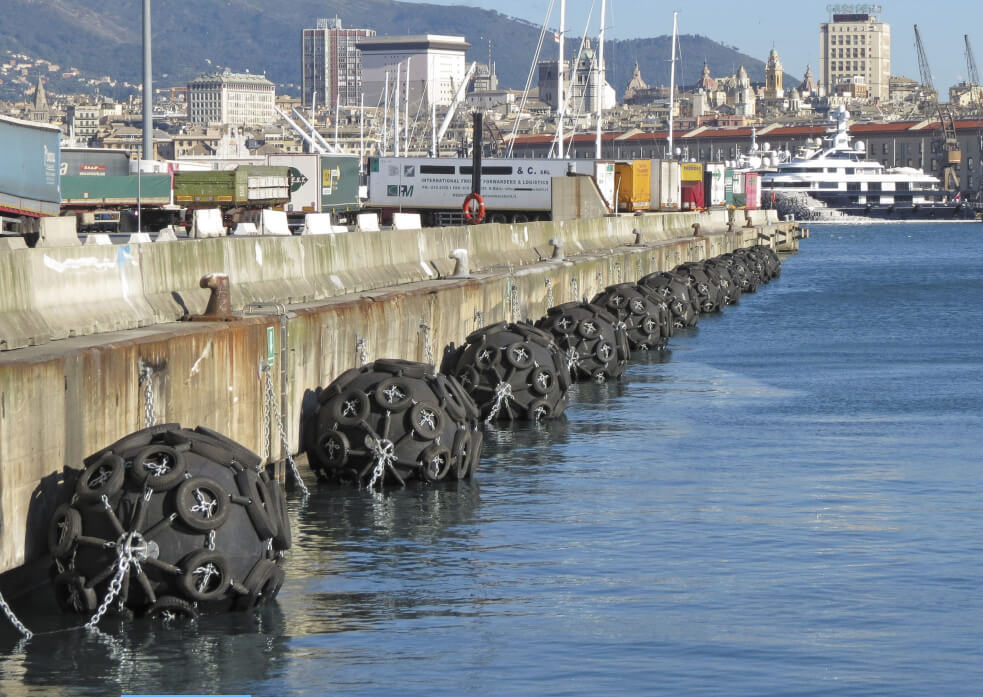
Material Selection and Composition in Rubber Fenders for Energy Absorption
The selection of materials is critical to the performance of rubber fenders. High-quality synthetic rubber compounds, such as EPDM (Ethylene Propylene Diene Monomer) and SBR (Styrene Butadiene Rubber), are widely utilized for their durability, suppleness, and resilience to environmental variables such as UV radiation and salinity. The composition of these materials is carefully developed to achieve the required stiffness and flexibility for maximum energy absorption.
Hollow vs. Solid Design in Rubber Fenders for Energy Absorption
| Aspect | Hollow Design | Solid Design |
| Internal Structure: | Filled with Air: Contains an air-filled chamber that compresses upon impact, giving a cushioning effect. | Homogeneous Rubber: The entire structure is comprised of solid rubber material, which deforms upon impact to absorb energy. |
| Energy Absorption: | Air Compression: When contacted, the air inside the fender compresses, absorbing energy. | Rubber Deformation: On impact with a vessel, the solid rubber material deforms and absorbs energy. |
| Reaction Force: | Lower Reaction Force: This results in a lesser reaction force on the vessel during berthing. | Higher Reaction Force: Generally has stronger response forces than hollow fenders. |
| Surface Pressure: | Distributed Pressure: Air compression distributes pressure evenly throughout the fender surface. | Localized Pressure: The deformation of the solid material causes pressure to be centered on the damaged location. |
Cellular Rubber Fenders for Energy Absorption
Cellular rubber fenders have a series of cells within the fender structure. These cells are filled with air and interconnected, which allows for homogeneous stress distribution and enhanced energy absorption.
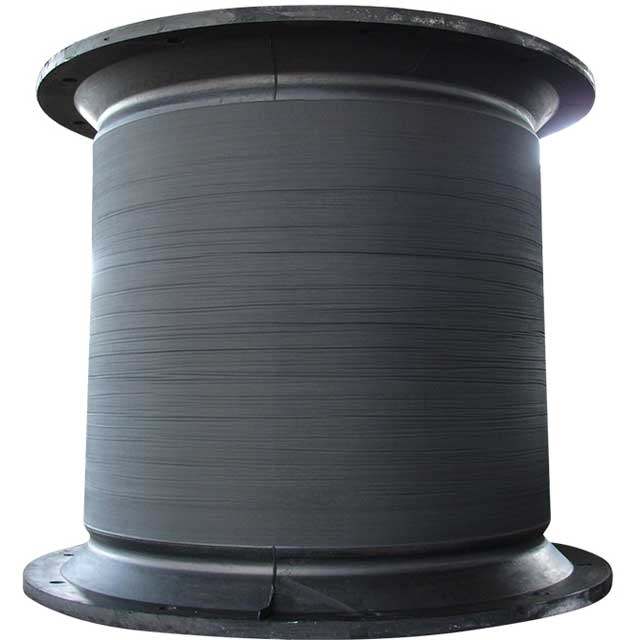
1. Energy Absorption Mechanism
| Aspect | Description |
| Air Compression: | Absorbs energy through the compression of air inside the interconnected cells upon impact. |
| Uniform Stress: | Allows for uniform stress distribution across the fender surface during compression. |
2. Key Features and Advantages
| Feature/Advantage | Description |
| High Energy Absorption: | Provides great energy absorption efficiency, making it appropriate for a variety of berthing conditions. |
| Low Reaction Force: | Reduces the reaction force exerted on the vessel during berthing, improving safety. |
| Uniform Loading: | The interconnected cellular structure allows for uniform loading and stress distribution. |
Conical Design and Tapered Ends in Rubber Fenders for Energy Absorption
The conical design is a common feature in many rubber fenders. This cone rubber fender features a steady increase in diameter from one end to the other, resulting in a smoother energy absorption process. Tapered ends lessen the reaction force applied to the vessel during berthing, resulting in safer and more controllable mooring operations.
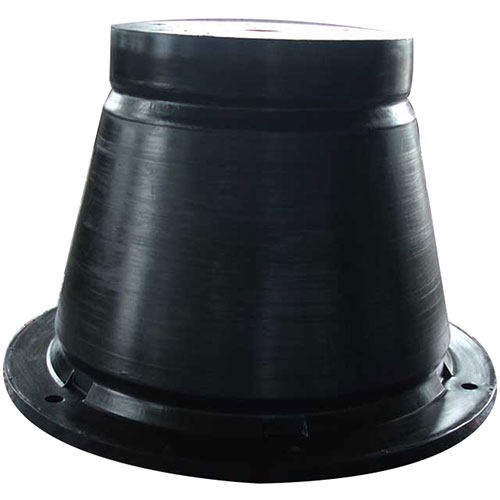
Internal and External Guide Systems in Rubber Fenders for Energy Absorption
Internal Guide Systems
| Aspect | Description |
| Type: | Embedded systems within the fender structure. |
| Materials: | Utilizes steel or synthetic fibers for reinforcement. |
| Function: | Guides vessels during berthing, enhancing alignment and energy absorption. |
| Advantages: | Improved structural integrity, guidance during vessel impact, and stress distribution. |
External Guide Systems
| Aspect | Description |
| Type: | Systems positioned externally to the fender. |
| Materials: | Commonly employs UHMW-PE (Ultra-High-Molecular-Weight Polyethylene) pads. |
| Function: | Reduces friction during vessel contact, resulting in smoother guidance. |
| Advantages: | Reduces wear and tear, enables controlled berthing, and increases fender and vessel longevity. |
Combined Systems
| Aspect | Description |
| Integration: | Some fenders incorporate both internal and external guide systems. |
| Benefits: | Comprehensive guidance for vessels, combining structural reinforcement and friction reduction. |
| Advantages: | Enhanced alignment, minimized friction, and improved overall performance. |
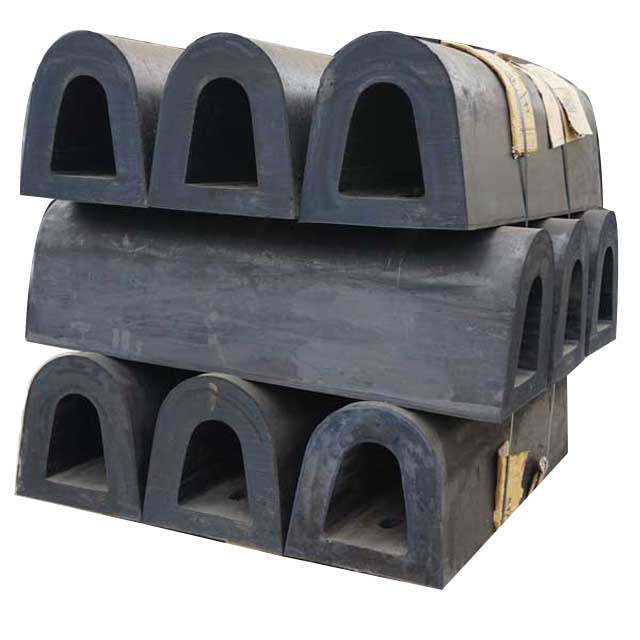
Load Distribution and Performance Monitoring in Rubber Fenders for Energy Absorption
Load distribution devices are integrated into rubber fenders to ensure even force distribution during contact with a vessel. This prevents localized stress concentrations, enhancing the overall lifespan and performance of the fender. Additionally, modern rubber fenders may include monitoring systems to assess their performance over time. These systems provide valuable data on factors like compression, temperature, and wear, allowing for proactive maintenance and replacement planning.
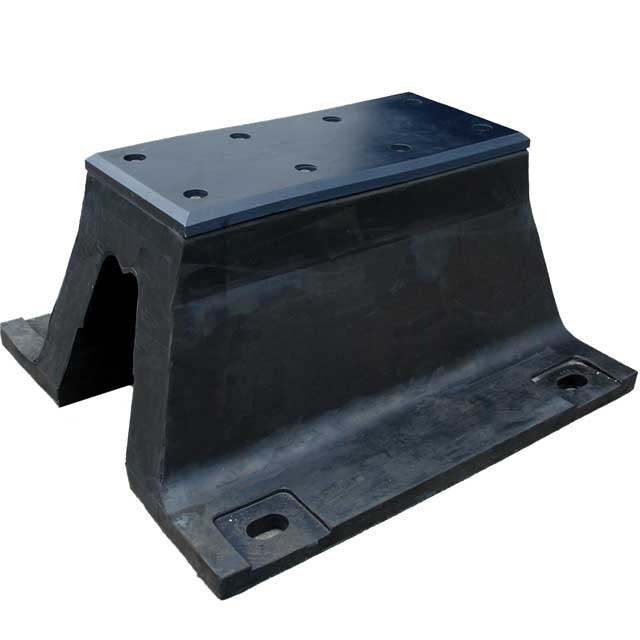
Innovative Materials and Technologies in Rubber Fenders for Energy Absorption
1. High-Performance Rubber Compounds
Natural Rubber Blends: Advances in blending natural rubber with synthetic rubbers or incorporating additives have led to enhanced performance in terms of strength, elasticity, and resistance to environmental factors.
High-Performance Elastomers: The development of elastomers with superior mechanical properties, such as high tensile strength and elongation at break, contributes to the overall effectiveness of rubber fenders.
2. Foam-Filled Fenders
Closed-Cell Foam Technology: Foam-filled fenders utilize closed-cell foam cores, providing excellent energy absorption and low reaction forces during impact. This design also enhances the fender’s buoyancy and reduces the risk of sinking.
Polyurethane Foams: The use of advanced polyurethane foams offers improved durability and resilience, making them suitable for demanding marine environments.
3. Fiber-Reinforced Composite Materials
Incorporation of Aramid or Carbon Fibers: Adding high-strength fibers to rubber compounds enhances the fender’s structural integrity and energy absorption capabilities. Aramid and carbon fibers are known for their excellent strength-to-weight ratios.
Composite Fender Panels: Some fender systems incorporate composite materials with layers of rubber and reinforcing fibers, providing a balance between flexibility and strength.
4. Smart Fender Technologies
Sensor Integration: Integration of sensors, such as pressure sensors or strain gauges, allows real-time monitoring of fender performance. This data can be used for predictive maintenance and optimizing port operations.
IoT Connectivity: Internet of Things (IoT) technologies enable remote monitoring and management of fender systems. This connectivity enhances overall safety and efficiency in port operations.
5. Sustainable Materials
Recycled Rubber: The use of recycled rubber in fender production aligns with sustainability goals. Recycled materials can maintain or even improve the performance of fenders while reducing environmental impact.
Bio-Based Materials: Exploration of bio-based rubber alternatives contributes to the development of eco-friendly fender materials.
6. Advanced Manufacturing Techniques
3D Printing: Additive manufacturing techniques, such as 3D printing, offer new possibilities in designing complex fender shapes for optimized energy absorption.
Molded-In Features: Advanced molding techniques enable the incorporation of specific features, such as grooves or patterns, to improve the fender’s performance under different impact scenarios.
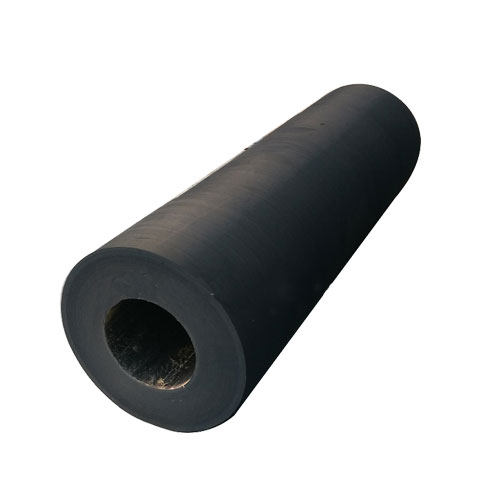
Conclusion
The mechanisms and technologies used in rubber fenders for energy absorption are diverse and continually evolving. The careful selection of materials, intelligent design considerations, and incorporation of modern technologies all contribute to rubber fenders’ effectiveness and reliability in protecting vessels and infrastructure during berthing and mooring operations. As the marine industry progresses, new materials and technologies are anticipated to improve the performance and capacities of rubber fenders, ensuring enhanced safety and sustainability in port operations.


